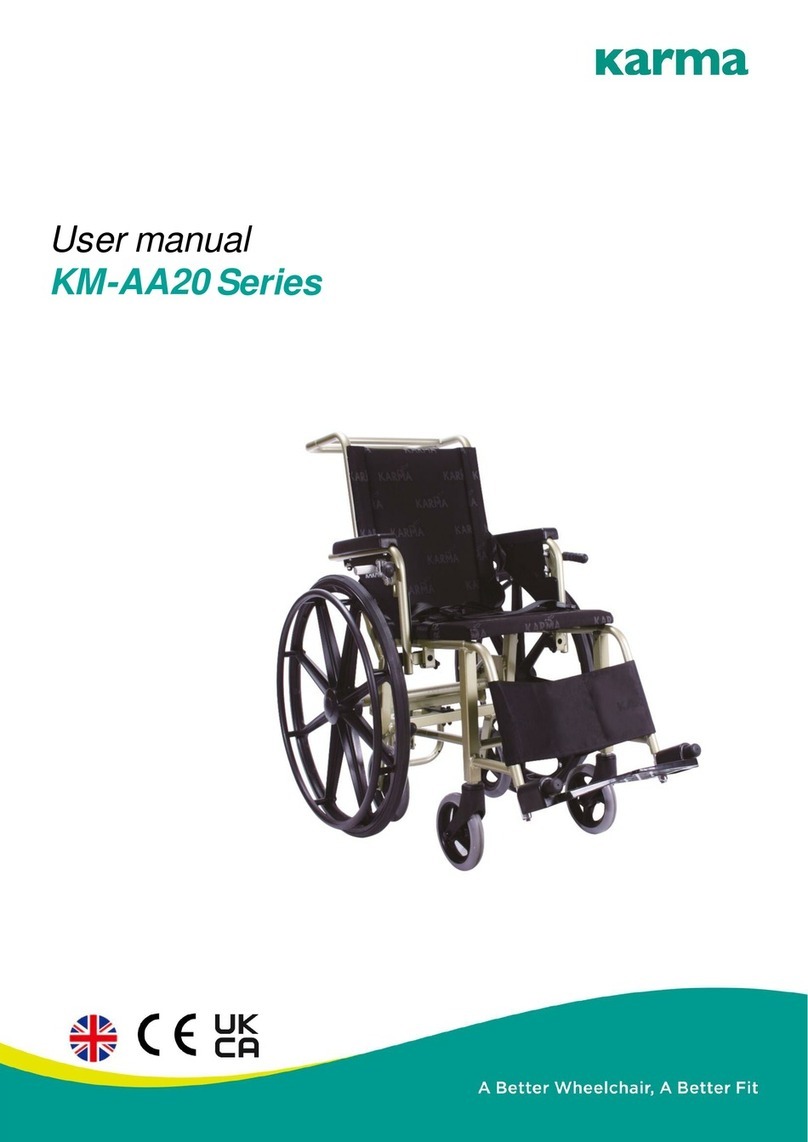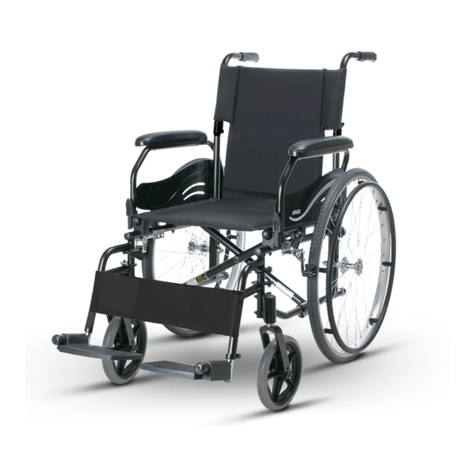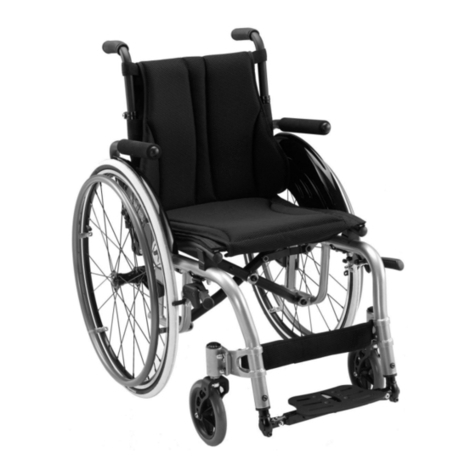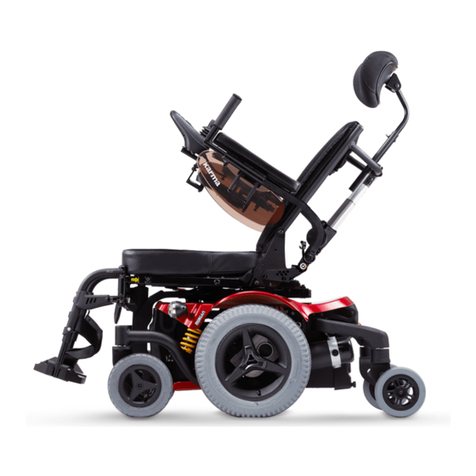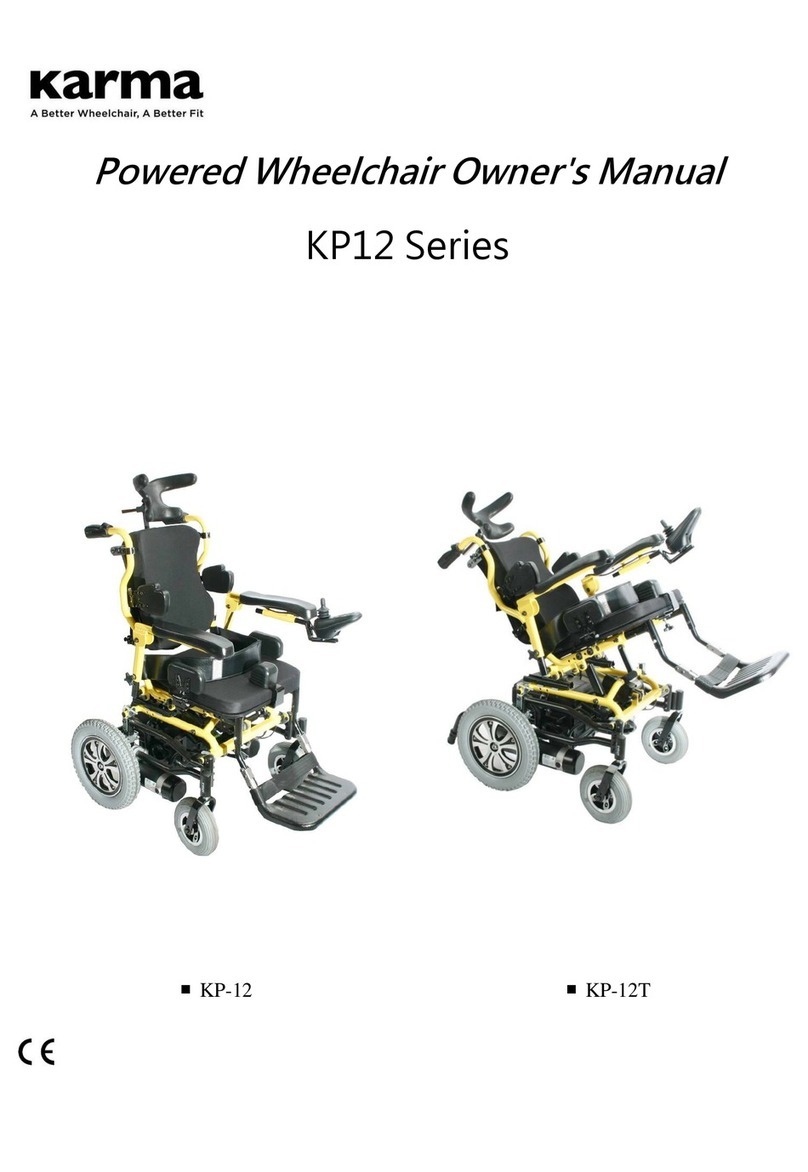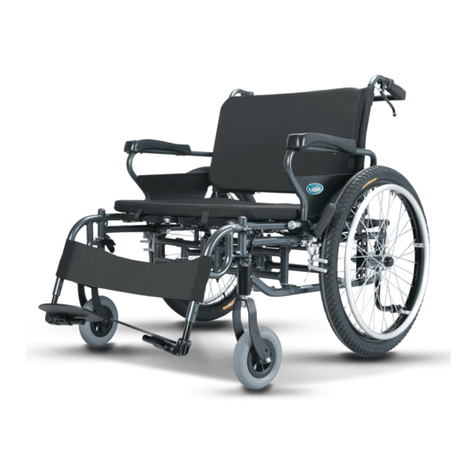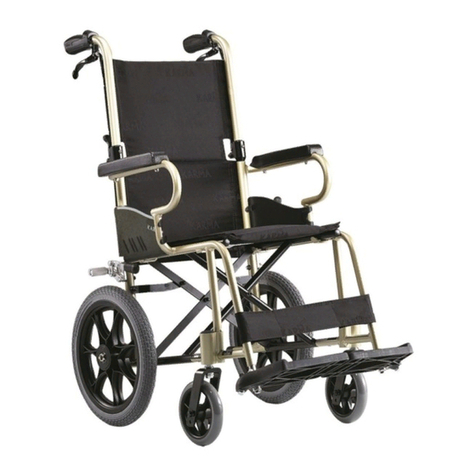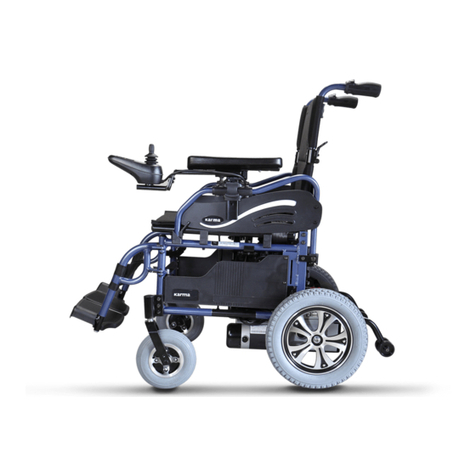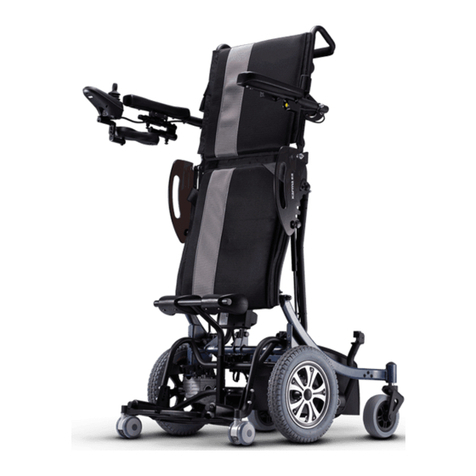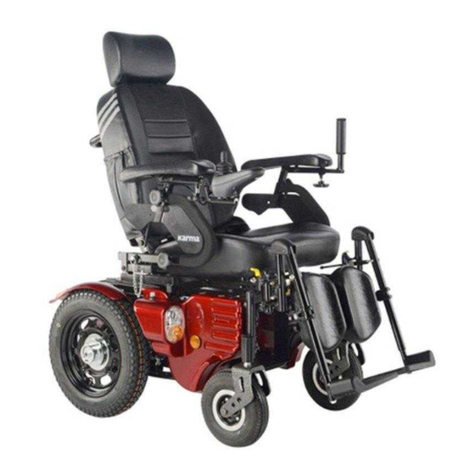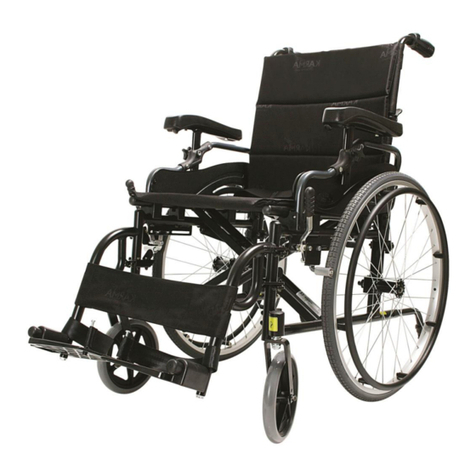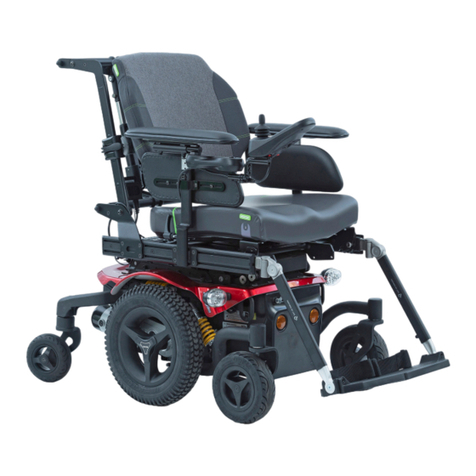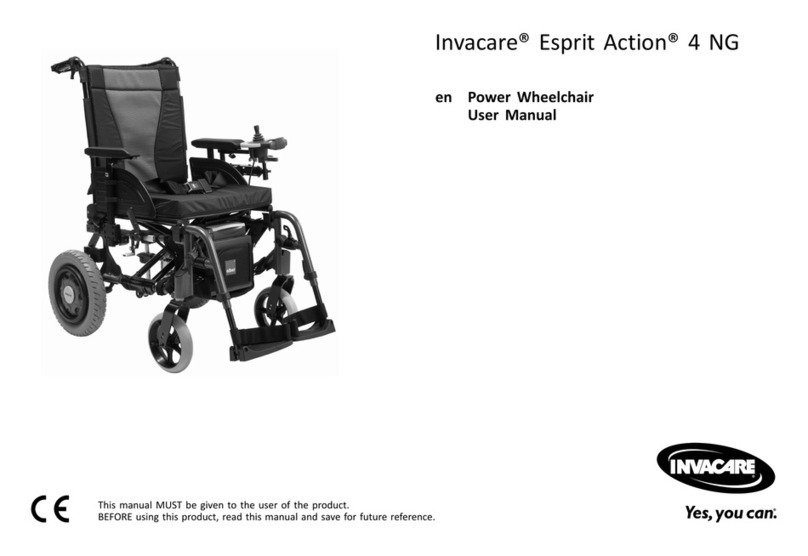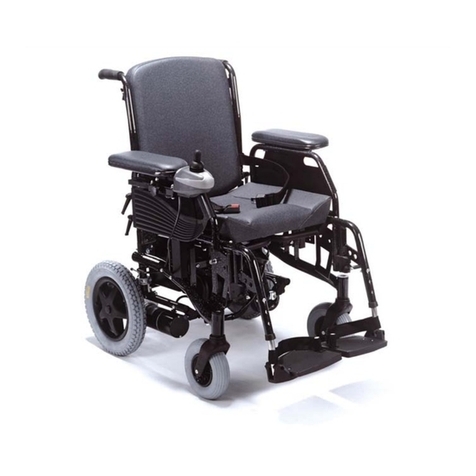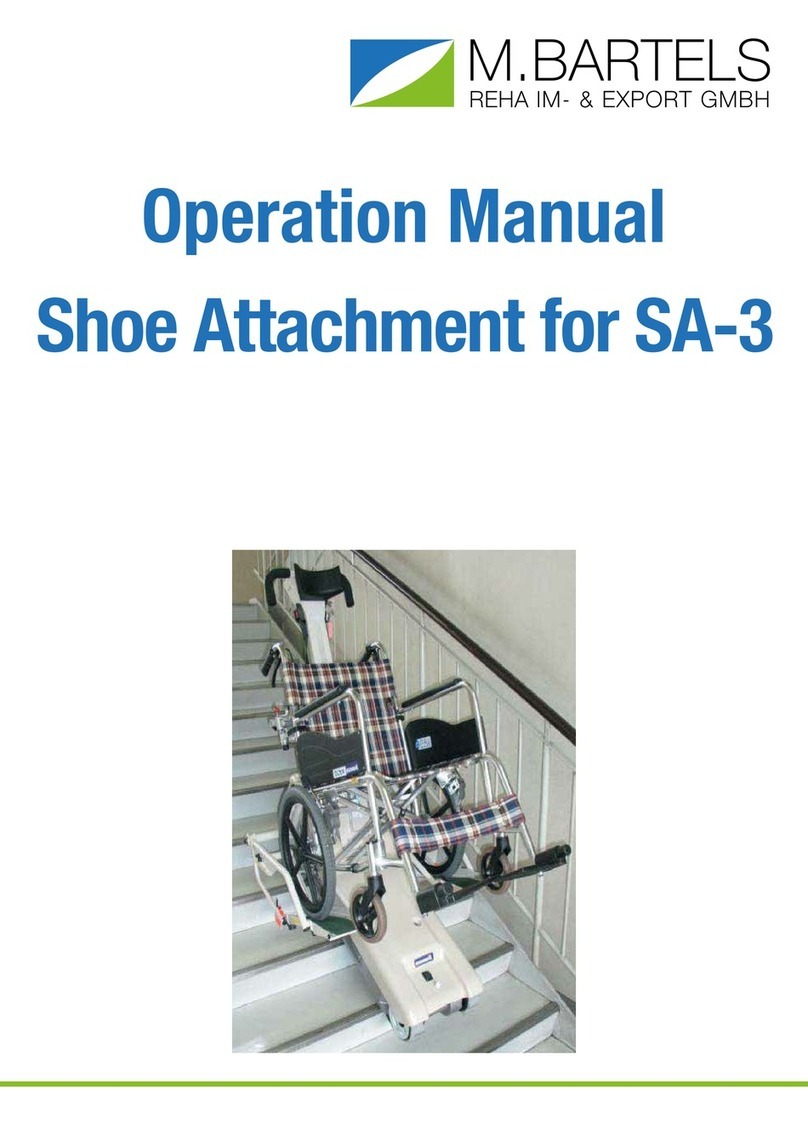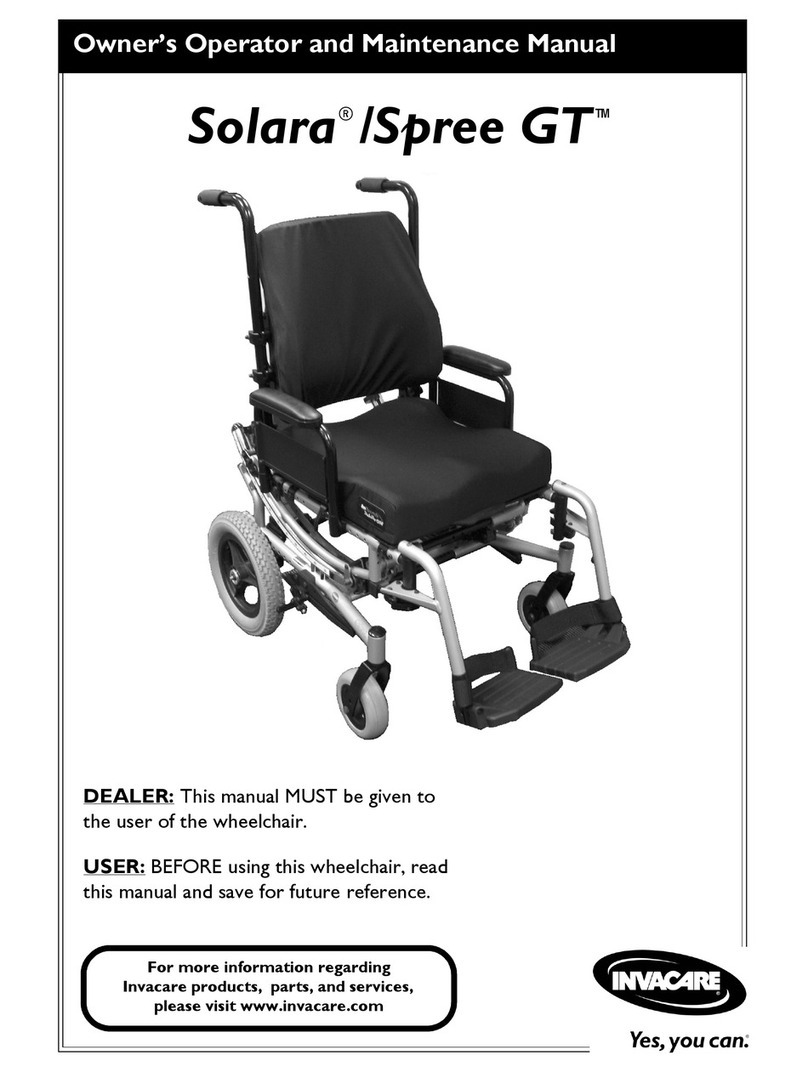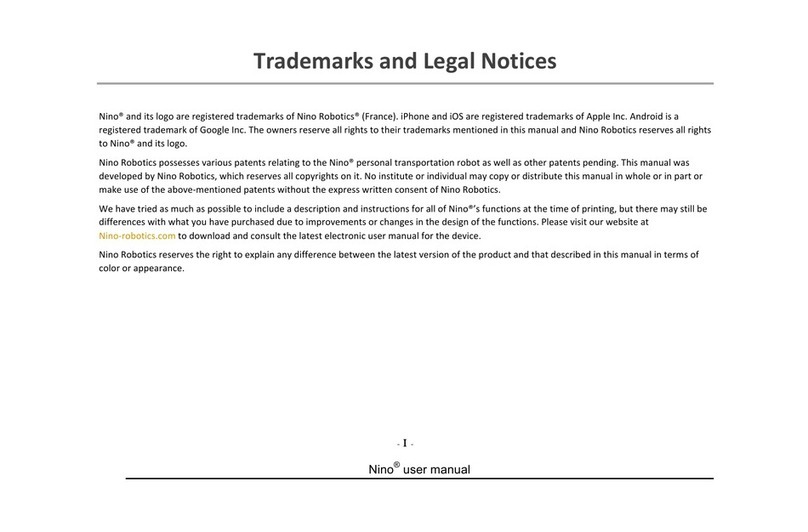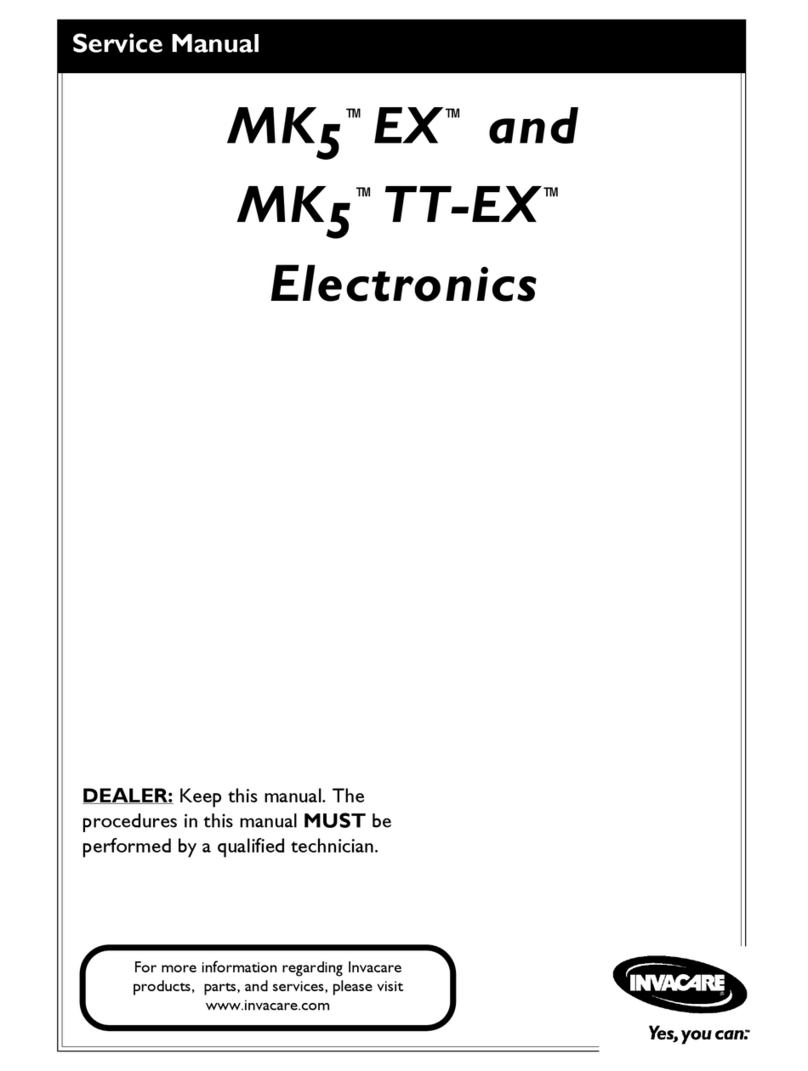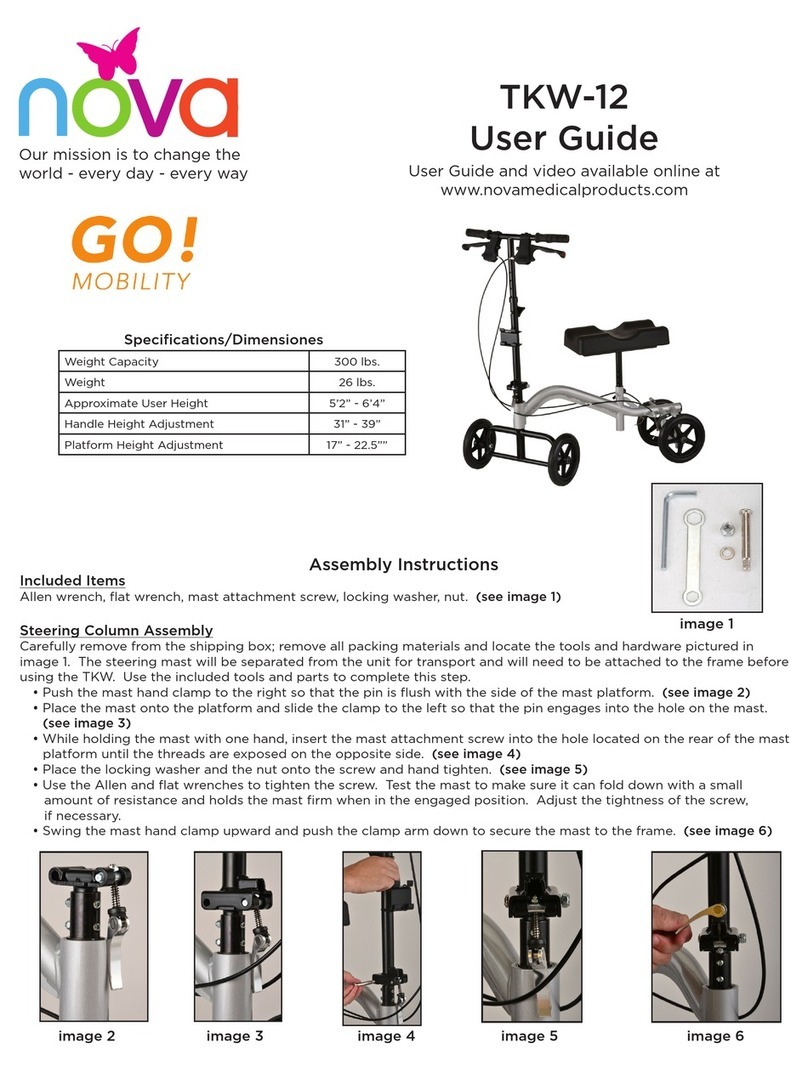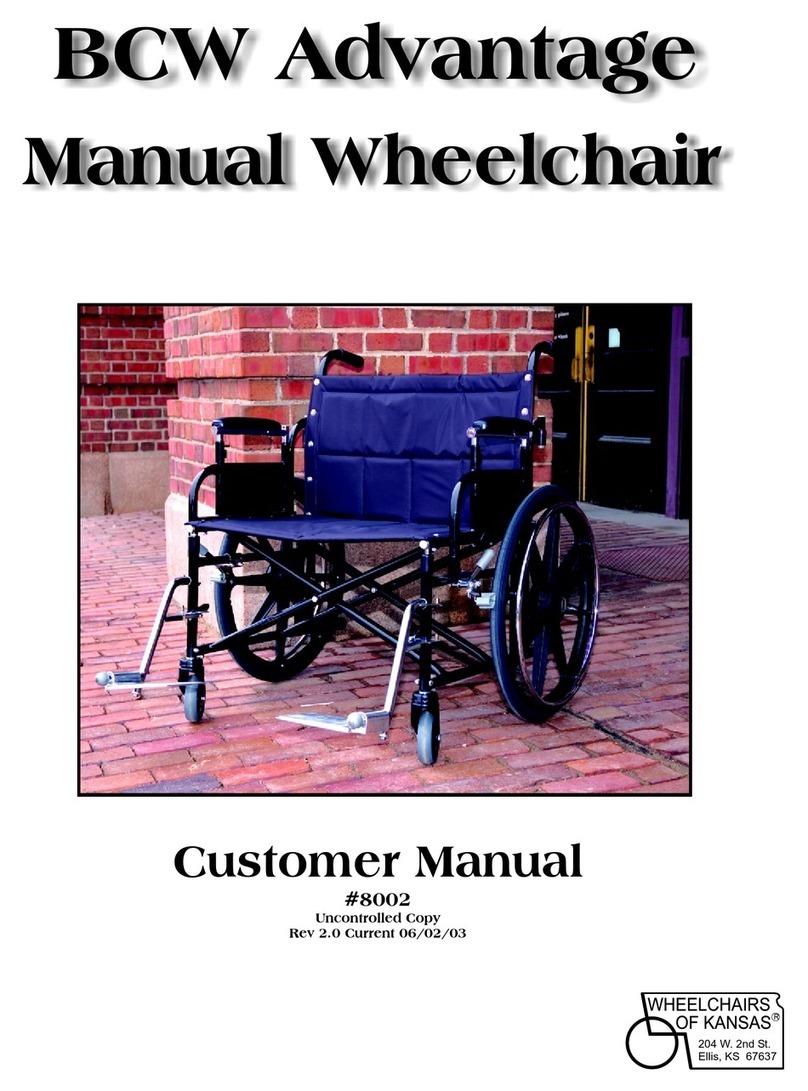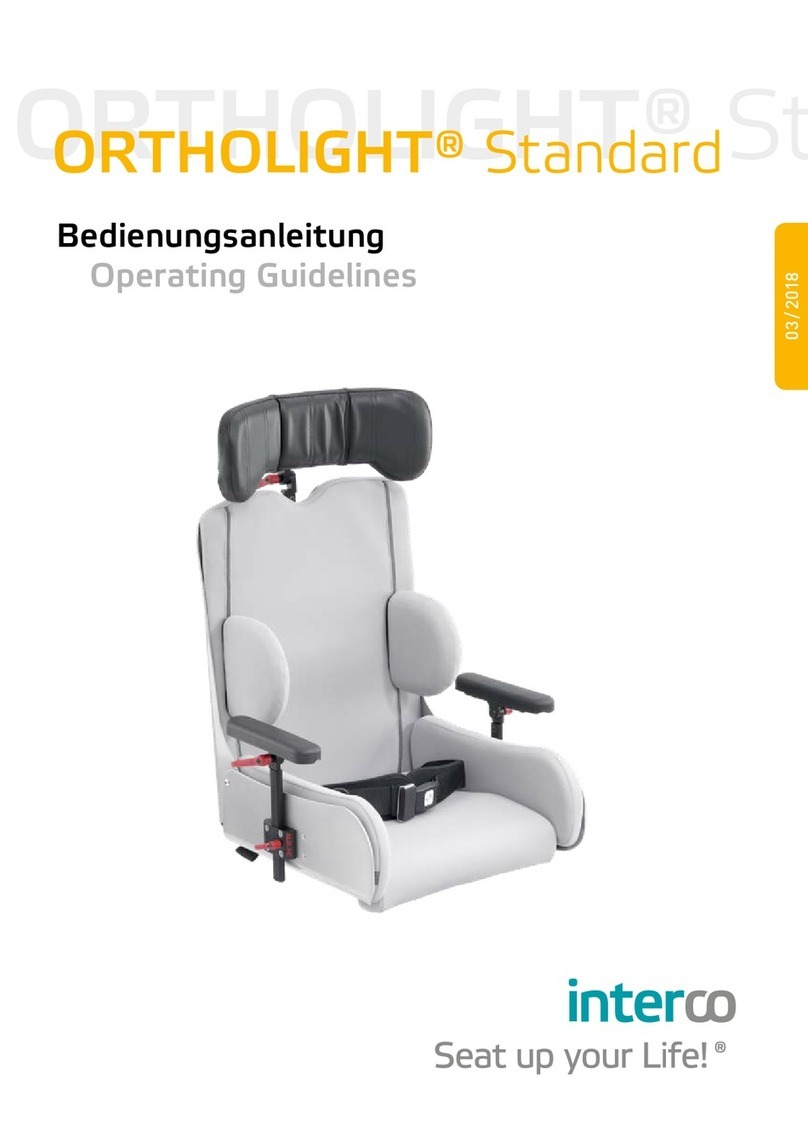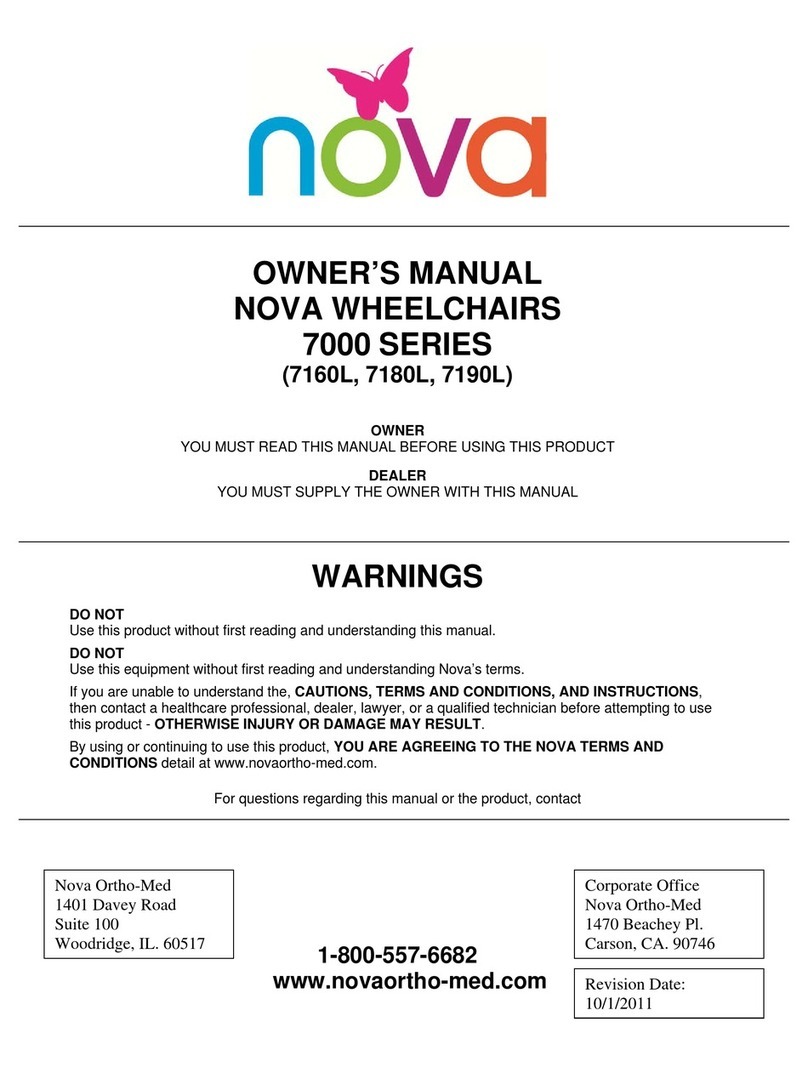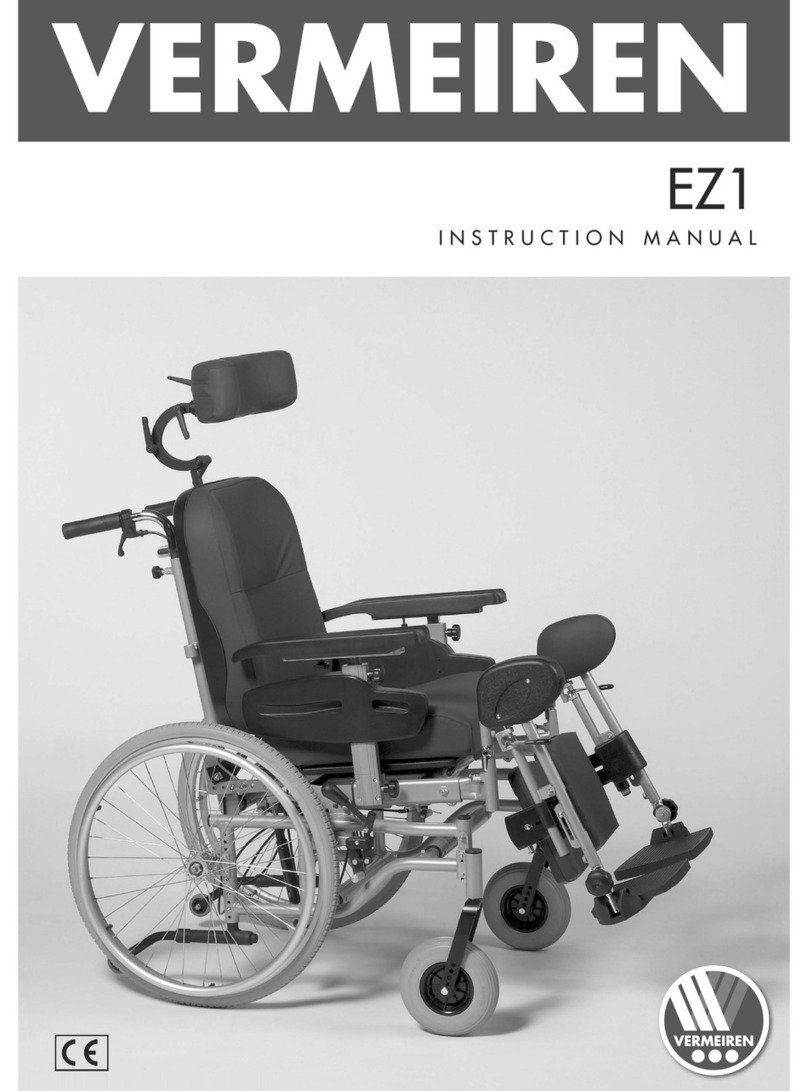GENERAL WARNING
●DO maintain your wheelchair well, in particular check the tyre pressure
since this affects the efficiency of the brakes. For the correct tyre pressure,
please see the walls of the tyres.
●DO make sure both brakes are applied before getting in or out of the
wheelchair.
●DO make sure both brakes are applied when the wheelchair is not being
pushed or used.
●DO take care when climbing kerbs or turning on slopes.
●DO avoid steep or uneven surfaces that may cause the wheelchair to tip
over.
●DO avoid soft surfaces as the casters may become bogged down.
●DO travel smoothly in all conditions.
●DO look well ahead to anticipate hazards such as furniture, doors,
potholes, etc.
●DO make sure that both feet are safely on the footrests and that clothing
is safely tucked out of the way so that it cannot get caught in the wheels.
●DO take care when traveling up or down or across inclines.
●DO keep both hands on the push handles to control the wheelchair, if you
are the attendant.
●DO pay attention to keep the wheelchair balanced.
●DO check the frame and components regularly and refer to this user
guide during and after the warranty period.
●DO tie-up the upholstery or replace which with a new one when it
becomes loose.
●DO lubricate bearings regularly.
●DO equip with anti-tippers to avoid falling backwards.
●DO equip with a seat belt designed for disabled people.
●DO equip with "heel loops" for disabled people.
●DO clean both hands after oiling the wheelchair.
●DO keep far away from flame
●DO NOT overload the wheelchair in any circumstance.
●DO NOT hang anything heavy on the back of the wheelchair that could
cause the wheelchair to become unstable, particularly when negotiating
inclines.
●DO NOT allow more than one user at a time.
●DO NOT use with an unconscious patient.
●DO NOT use other transport to pull the wheelchair.
●DO NOT do "wheelies", since you might fall or tip over backwards and
suffer a severe injury.
●DO NOT sit in the wheelchair within a moving vehicle unless it has been
affixed the labels of hook mark. The labels of hook mark mean that the
wheelchair fulfils the performance requirements for a “Crash Test” of
